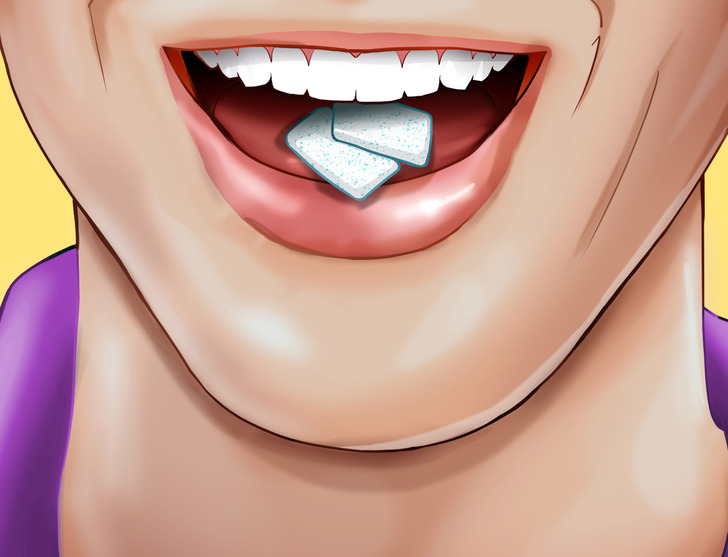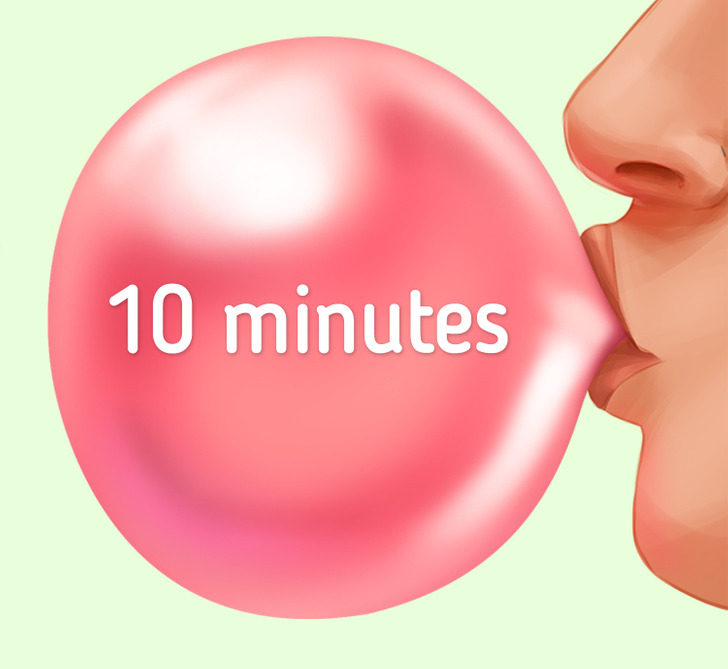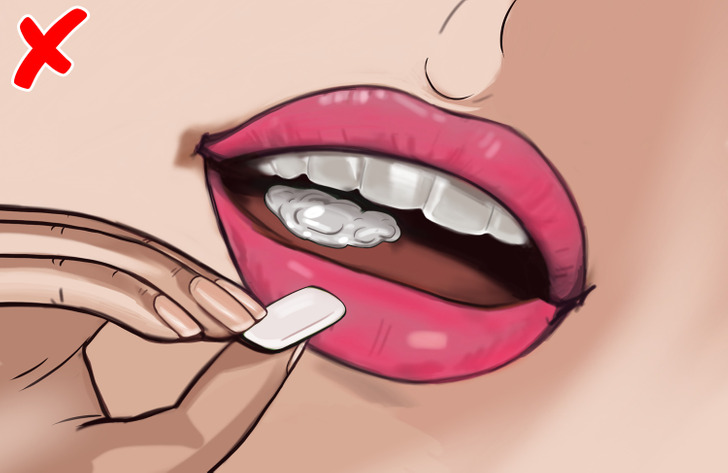
How Long You Can Chew Gum
Many of us chew gum. Gum is widely advertised as protection from cavities and as something that makes your breath fresh. But very few people follow the recommendation on when chewing gum should be thrown away.
5-Minute Crafts is going to tell you how long you can chew gum.
What chewing gum is

Chewing gum is a product made from resilient substances and it’s chewed for the flavor. People of the Mediterranean have, since antiquity, chewed the sweet resin of the mastic tree. Today, chewing gum is very popular. It is advertised as a solution for bad breath. Many chew gum to relax and feel less hungry.
Different gum may have different ingredients, but in general, all of them include these:
- gum base (resins, humectants, elastomers, emulsifiers, fillers, waxes, antioxidants, and softeners)
- sweeteners
- flavoring agents
Benefits of chewing gum

Chewing gum is one of the most effective and simple ways of removing bacteria from the mouth. Experts say that 10 minutes of chewing gum removes around 100 million bacteria.
Gum also has some other benefits. It:
- Weakens acid reflux. More saliva is produced when chewing gum, so it balances out the acids in the esophagus.
- Helps with dry mouth at least for a little while.
- Burns calories. 1 hour of chewing burns 11 calories.
- Improves memory. Chewing gum boosts blood flow to your brain, which may help improve your memory.
- Fights sleepiness. If you feel tired, chewing gum can help you stay alert.
- Eliminates nausea. The production of saliva helps fight nausea. This is especially true for motion sickness and morning sickness during pregnancy.
How long you can chew gum

Don’t chew gum for too long because the negative consequences may outweigh the benefits. Experts say that the perfect duration for chewing is 10 minutes. After that, it’s better to throw it away.
We found out that chewing gum removes bacteria from the mouth. But prolonged chewing has the opposite effect, and the bacteria stay in the gum. If you chew it for too long, the bacteria may go back into the mouth.
Chewing gum for more than 15 minutes results in jaw muscle exhaustion. If you often forget to throw gum away on time, set a timer on your phone when you start chewing.
Negative side effects of chewing gum

- Increased chances of TMJ. Chewing gum puts an excessive amount of strain on the jaw, which leads to temporomandibular joint disorder. This condition comes from the overuse of certain jaw muscles. It leads to headaches, and pain in the neck and ears, among other problems.
- Irritable bowel syndrome. When chewing gum, people swallow extra air which results in IBS, or bloating and abdominal pain.
- Diarrhea. Artificial sweeteners in gum may cause diarrhea.
- Headache. Chewing gum may result in headaches in children and teenagers.
- Chewing gum may also lead to dental issues.
- Chewing gum with sugar may result in the formation of dental plaque and tooth damage.
- Chewing gum for several hours in a row may lead to gum and tooth damage. When chewing, acid builds up in the mouth that destroys the tooth enamel.
- Increased pressure damages the teeth and dental work, including fillings and crowns. The teeth may become loose and even cause braces to fall off.
- Dental fillings from amalgam contain mercury. Chewing gum may lead to mercury getting into the body.